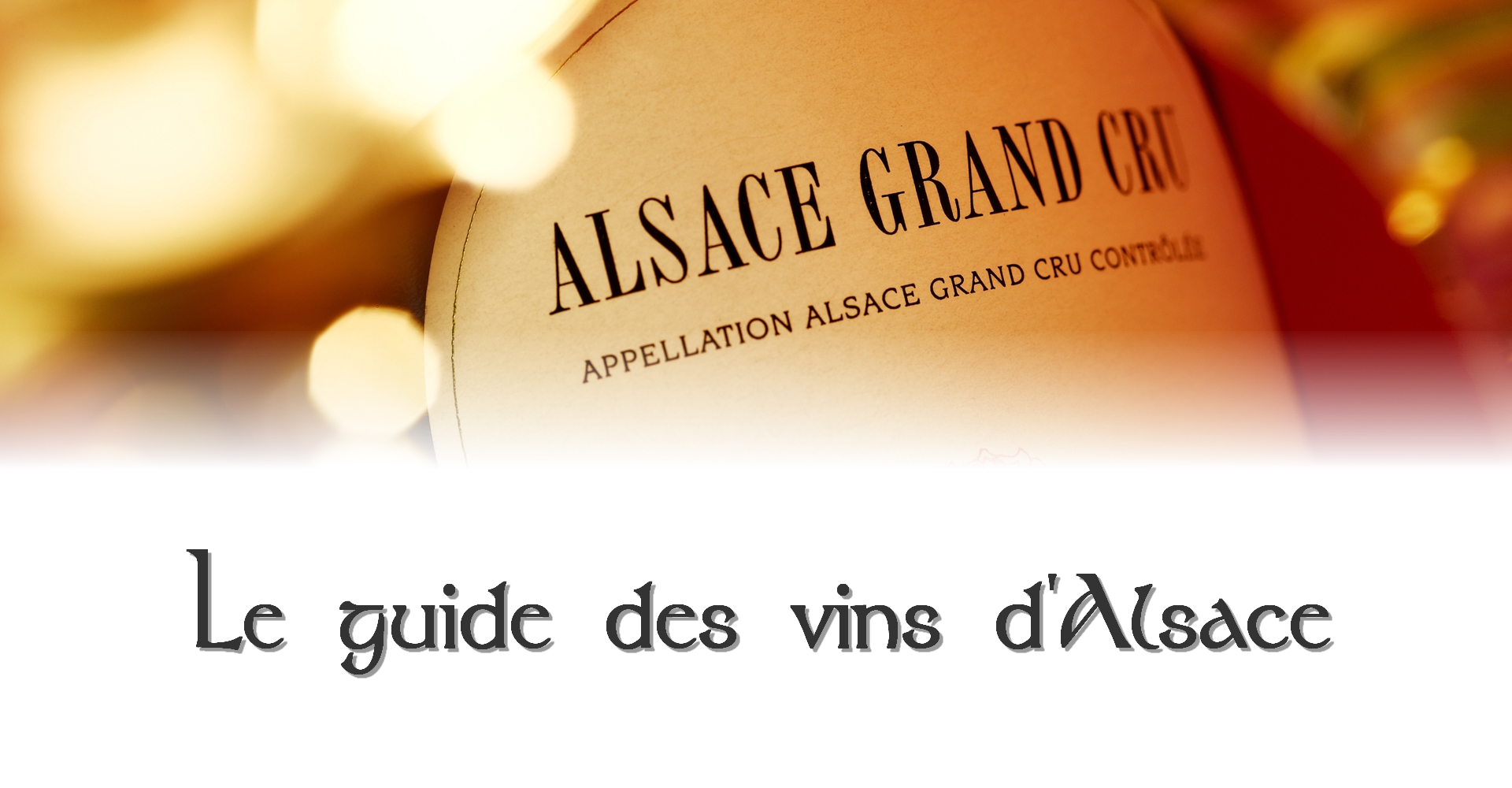Everything you need to know about Alsace wines
The vineyard Alsace is one of the most beautiful in France. The Wine Route stretches for 125 km and passes through some of the most picturesque villages imaginable. It defies many French AOC customs: the wines are named after their grape variety, and the majority are white.
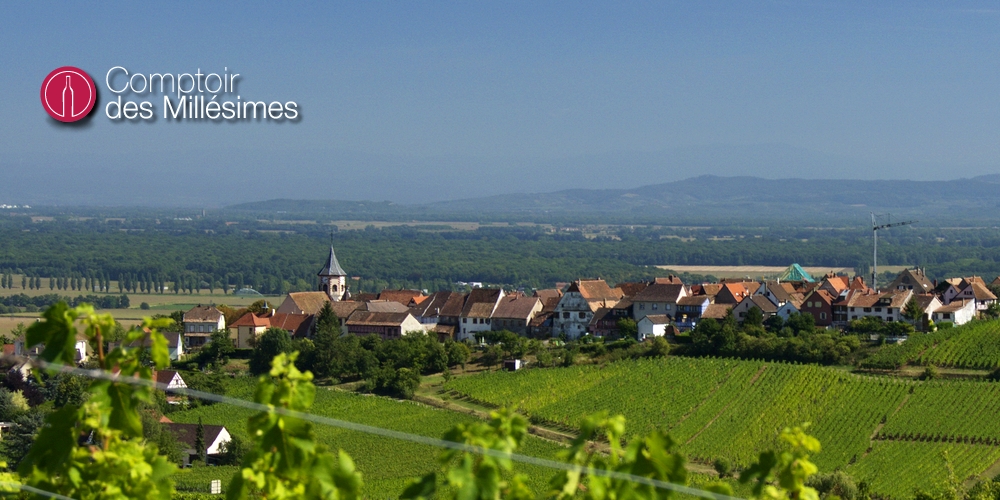
Climate and terroirs
Alsace is a protected terroir with an extremely favorable location for vine-growing. Springs are warm, summers dry and sunny, autumns long and mild, winters cold. The production area extends over a wide variety of soils. Their geological structure is complex, with different types of rock overlying the ancient Vosges granite. Over the centuries, winegrowers have succeeded in selecting the best sites: facing south or south-west, they occupy the slopes of the innumerable small valleys carving out the Vosges massif, forming a band of vines between 1.5 and 3 km wide.
Les grands crus
The best-placed vineyards have achieved a certain notoriety, usually for a particular type of wine. Since 1975, the INAO has delimited the best plots and awarded them the "grand cru" classification. The resulting list does not meet with unanimous approval: some winegrowers argue that a particular site is not worthy of the classification, while others resent the fact that another has been omitted from the selection. Not all producers make use of the "grand cru" appellation, as legislation only permits Riesling, Gewürztraminer, Muscat and Pinot Gris. Furthermore, to be labelled "grand cru", wines must come from vines with a yield of less than 70 hl/ha. This figure remains high compared to the rest of France: for example, the yield of a Burgundy Premier Cru white vine is limited to 30 hl/ha.
Grape varieties and wine styles
The main grape varieties planted in Alsace are, in alphabetical order :
Gewürztraminer
This white variety occupies a growing area, covering almost a quarter of the vineyard. Its character is very pronounced. In a good year, a successful Gewürztraminer is spicy, full-bodied and generous.
Muscat
This aromatic grape variety comes in two versions - Muscat d'Alsace and Muscat Ottonel. The former is dry, with an intense grape fragrance. It has very irregular yields and is planted less and less.
Pinot Blanc
This white grape variety is enjoying a revival. It produces fresh, dry white wines reminiscent of Burgundy.
Pinot Gris (or Tokay d'Alsace)
A minority grape variety in Alsace, it nonetheless produces rich, complex white wines. The dry wines are extremely elegant, while the sweet wines are surprisingly generous.
Pinot Noir
This is the only black grape in Alsace. It is used to make light-colored red wines. When yields are not too high, they can be excellent.
Riesling
This is Alsace's most elegant and distinguished grape variety. It produces grandiose, long-aging dry whites, as well as excellent late-harvest mellows. Riesling d'Alsace is either frankly dry or mellow.
Sylvaner
This grape variety produces simple, fresh wines, but a single exceptional terroir enables them to reach Riesling quality levels.
*Chasselas and Pinot Auxerrois are two of Alsace's less interesting grape varieties whose names appear less frequently on labels. They are blended to make Edelzwicker.
Winemaking
On the whole, Alsace sticks to fairly traditional white winemaking methods. Here, the wines are aged in large wooden foudres or in vats. They are bottled between six and twelve months after harvest. Some winemakers successfully use new wood for fermentation or ageing of Pinot Blanc.
Vintages and ageing
Disastrous vintages are rare in Alsace, as the region enjoys a fairly regular climate. A good vintage is one in which a long, warm autumn is conducive to the production of late-harvest wines. To find out more, read our article on best vintages of Alsace wines.
How to read an Alsace wine label
Alsace labels are simpler than those of wines from the rest of France: the first piece of information on the label is the name of the grape variety, followed by the name of the owner. The name of the vineyard or production village is often mentioned, especially in the case of a Grand Cru. Other generic terms that may be encountered are as follows.
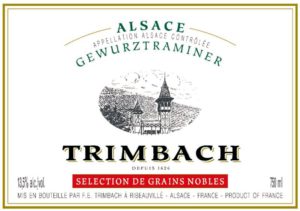
Crémant d'Alsace
C'is a sparkling wine obtained by a second fermentation in the bottle (traditional method). Crémants are white, sometimes rosé, and generally made from Pinot Blanc grapes.
Edelzwicker
It's a white wine made from a blend of "noble" grape varieties, Chasselas and Sylvaner being the most common. The term is tending to disappear.
Late harvest
This term indicates that the wine is made from grapes harvested at optimum maturity, which does not necessarily mean later than normal. A Vendanges Tardives wine is usually mellow, but can also be dry: you only find this out when you taste it. This category only applies to the main grape varieties: Gewürztraminer, Pinot Gris, Riesling or Muscat.
Sélection de Grains Nobles
These wines are made exclusively from grapes affected by noble rot and harvested by successive sorting. They are only produced in very hot years. They are always sweet, rich wines with great ageing potential.
The best producers of Alsace wines
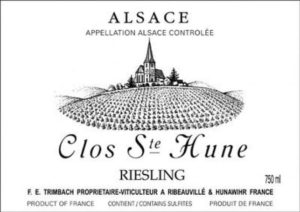
With Hugel, Trimbach has done more than anyone else to promote Alsace wines worldwide. His wines include Gewürztraminer, particularly the Cuvée des Seigneurs de Ribeaupierre, and Pinot Gris, but the Rieslings are without doubt the region's finest. The Cuvée Frédéric-Émile, made from the two grands crus, was only produced in the Clos Sainte-Hune, a parcel that has belonged to the Trimbach family for over 200 years. It lies within the Rosacker grand cru, but is not labelled "grand cru". Clos Sainte-Hune is a very high-class wine, unfortunately impossible to find on the market. This archetypal Riesling is often considered Alsace's finest wine.
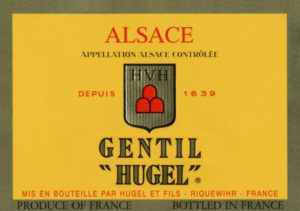
Alsace's most famous house, founded in 1639, is now run by the thirteenth generation of Hugels. Some of the wines from its vast cellars beneath the village of Riquewihr are centuries old. The basic range includes a fine Gewürztraminer and a Pinot Blanc de Blancs. Its Cuvée Tradition and Jubilé Réserve personnelle ranges are of real quality. The originator of the vendange tardive style, Hugel is one of its leading producers, and also excels in the elaboration of Sélections Grains Nobles: its Pinots Gris and Rieslings are outstanding in this category. The house's grands crus come from the Sporen and Schoenenbourg vineyards. Hugel produces large volumes of reliable wines of consistent quality.
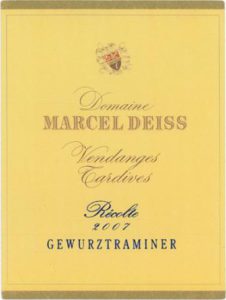
Jean-Michel Deiss is one of Alsace's top three producers. His multi-varietal wines are as harmonious as they are original, and his grands crus incomparable. Together with his son Mathieu Deiss, Jean-Michel makes wines from a variety of vines. A blend of grape varieties that he believes perfectly matches the identity of this prestigious terroir. The Deiss family produces wines of great complexity, with a panoply of flavors and great balance. The fusion of grape varieties is natural, and the result is impressive.
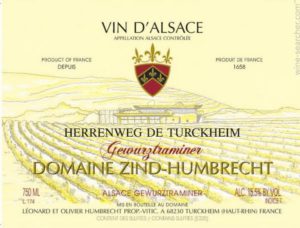
Léonard Humbrecht is a tireless advocate of small yields. His 30-hectare estate is extremely well situated and boasts no fewer than four grands crus. His winemaking methods are traditional. His Pinot Gris and Gewürztraminer are exceptional wines. Olivier Humbrecht and his father are passionate about working with vines and have opted for biodynamic viticulture. The large cellar, located in Turckheim, has contributed to the improvement in quality. Discover our article on Zind Hombrecht's best vintages.
► FIND ALL OUR GREAT VINTAGES OF ALSACE WINES AVAILABLE FOR PURCHASE ◄
- Feed has no items.

